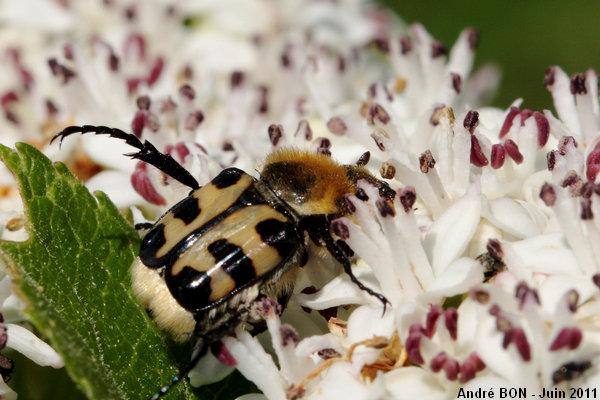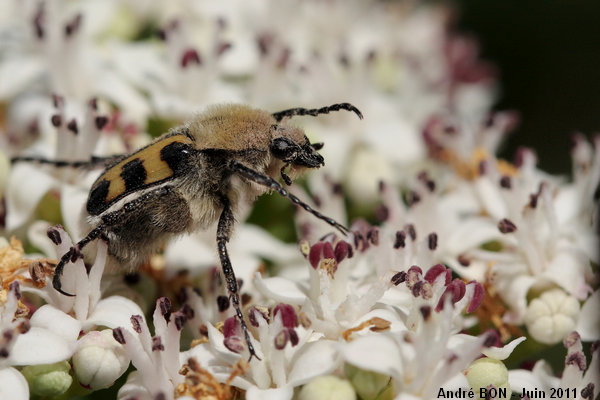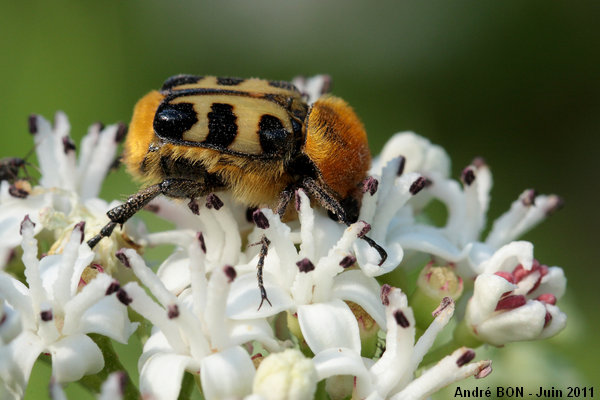


| Trichius fasciatus (Linnaeus, 1758) |



|
|
Scientific name: Trichius fasciatus (Linnaeus, 1758) Common name: French name: Trichie fasciée, Trichie à bandes Order: Coleoptera Family: Cetoniidae Wingspan : 9 to 12 mm. Biotope: Deciduous forests. The larva grows during two years in Beech, Birch, Alder or other rotting wood. You can observe adults on flowers, especially umbelliferae flowers, in clearings, near woodland edges or in sunny flower meadows. Geographic area: Europe, western Asia. Observation period : June to August |
Trichius fasciatus shows a dense fur which is a golden colour on the upper side and yellowish or whitish on the lateral sides of the body. The thorax is a more or less dark brown colour. The elytra are yellow or orange and crossed by three black stripes, the second one and the third one are interrupted in the middle. The basal black cross stripe is also sometimes interrupted in its middle. The suture between the elytra is black. There are two similar species, Trichius zonatus and Trichius sexualis. In France, Trichius sexualis is restricted to the Vosges and Alsace regions. Females show two deep notches at the rear of the last sternite. Males have an important white pubescence on the four sternites before the last one (a view of the under side is needed). In the other regions of France (and in northern Europe) you just need to tell Trichius zonatus and Trichius fasciatus apart. The most reliable criteria is based on a sharp tooth located at two third of the tibia on the middle legs of Trichius fasciatus. Trichius zonatus only shows a small rounded bump at the same location. I have read different information about the patterns on the elytra. It seems commonly admitted that, because of variation, the patterns must not be part of the keys but must only be considered as an indication. Based on experience and because of variability I think that you cannot trust this information and you must stay at Trichius sp. if you can't evaluate the presence of a tooth on the median tibia (in places where Trichius sexualis is missing of course). |
| [To know more about the Trichius fasciatus] [Next picture] [Top] |

|
Is it the Murphy's law which tells that the typical characteristic to tell one species apart is always hidden or in a blurred area on the picture? Well, it does not always apply. This Trichius is positioned with its median leg held upwards so that I can see the well marked tooth, typical of the Trichius fasciatus species. This tooth is quite visible on the upper edge of the tibia, at two third of its length. |
| [To know more about the Trichius fasciatus] [Next picture] [Previous picture] [Top] |

|
It is often not easy to confirm or infirm the presence of a tooth on the tibia of the median leg. So many of my observations finish as Trichius sp. |
| [To know more about the Trichius fasciatus] [Previous picture] [Top] |

|
This Trichius has rather yellow hairs on the body edges. I am rather used to observing Trichius with white hairs. |